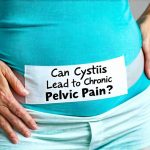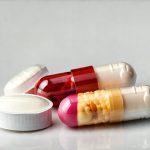Painful bladder syndrome, more formally known as Interstitial Cystitis/Bladder Pain Syndrome (IC/BPS), is a chronic condition characterized by persistent bladder pain and urinary frequency and urgency. It’s often misunderstood and can significantly impact quality of life, leading to emotional distress alongside physical discomfort. Many individuals initially assume antibiotics are the go-to treatment, given that urinary tract infections (UTIs) share some overlapping symptoms. However, IC/BPS is distinctly different from a UTI, and its treatment pathways frequently diverge, often minimizing or entirely bypassing antibiotic use. Understanding this difference is crucial for effective management and avoiding unnecessary medication.
The core issue isn’t typically bacterial infection in the case of IC/BPS. Instead, it’s believed to involve multiple factors including potential defects in the bladder lining that allow urine to irritate nerve endings, immune system dysfunction, and neurological sensitivities. This complex etiology means a holistic approach is often more effective than simply targeting bacteria—an approach focusing on symptom management, lifestyle modifications, and addressing underlying contributing factors. The diagnosis itself can be challenging, relying heavily on exclusion of other conditions and careful assessment of symptoms and medical history.
Understanding the Role (and Lack Thereof) of Antibiotics
Antibiotics are designed to combat bacterial infections. In a typical UTI, bacteria like E. coli invade the urinary tract causing inflammation and discomfort. Treatment with antibiotics effectively eradicates the infection and resolves the symptoms. IC/BPS, however, isn’t usually caused by bacteria. While some individuals with IC/BPS may experience occasional UTIs as a secondary issue, treating the underlying syndrome itself doesn’t involve broad-spectrum antibiotic use. In fact, frequent or prolonged antibiotic use can sometimes exacerbate symptoms in IC/BPS patients due to disruption of the gut microbiome and potential increased bladder irritation from altered urinary pH levels.
The misdiagnosis of IC/BPS as a UTI is common, especially in early stages when symptoms overlap significantly. This leads many individuals down a path of repeated antibiotic courses that provide temporary relief (if the patient also has a concurrent UTI) but ultimately fail to address the root cause of their bladder pain. A proper diagnosis by a healthcare professional specializing in pelvic health or urology is essential to differentiate between these conditions and establish an appropriate treatment plan. It’s important to note that some research suggests a possible role for low-dose antibiotics in some IC/BPS patients, but this remains controversial and isn’t standard practice.
Even when UTIs occur alongside IC/BPS, the approach differs. Short courses of targeted antibiotics are used only when an actual infection is confirmed through urine culture, rather than as a preventative or routine treatment for bladder pain. This emphasizes the importance of accurate diagnosis to avoid unnecessary antibiotic exposure and maintain antibiotic effectiveness overall.
Non-Antibiotic Approaches to IC/BPS Management
Given that antibiotics aren’t typically part of the core IC/BPS treatment strategy, what alternatives are available? A multifaceted approach is generally most effective, focusing on symptom management and attempting to address underlying contributing factors. This often involves a combination of lifestyle modifications, physical therapy, medications (other than antibiotics), and interventional procedures. Lifestyle changes might include dietary adjustments—reducing consumption of bladder irritants like caffeine, alcohol, citrus fruits, spicy foods, and artificial sweeteners—and stress management techniques.
Physical therapy, specifically pelvic floor rehabilitation, can be incredibly beneficial. A skilled physical therapist specializing in pelvic health can help identify and address muscle imbalances contributing to pain and urinary symptoms. This often involves exercises to strengthen the pelvic floor muscles (though sometimes reducing tension is more important) and improve coordination. Medications used may include pentosan polysulfate sodium (Elmiron), which aims to restore bladder lining protection (although its use has been associated with potential vision side effects, requiring careful monitoring), antihistamines to reduce urgency, and low-dose tricyclic antidepressants for pain management.
Beyond these core strategies, interventional procedures like bladder instillations (introducing medications directly into the bladder) or neuromodulation (using electrical impulses to modulate nerve activity) might be considered in more severe cases under the guidance of a specialist. It’s vital to understand that IC/BPS treatment is often iterative – finding what works best for each individual requires patience, persistence and close collaboration with their healthcare team.
Dietary Modifications & Bladder Irritants
One of the first lines of defense in managing IC/BPS symptoms is dietary modification. Identifying and eliminating bladder irritants can significantly reduce pain and urgency. This isn’t a one-size-fits-all process, as sensitivities vary greatly between individuals. However, some common culprits include:
- Caffeine: Found in coffee, tea, soda, and energy drinks.
- Alcohol: Especially beer and wine.
- Citrus Fruits & Juices: Including oranges, lemons, grapefruit, and pineapple.
- Spicy Foods: Containing capsaicin or other irritating compounds.
- Artificial Sweeteners: Such as aspartame and saccharin.
- Acidic Foods: Tomatoes, vinegar-based dressings.
An elimination diet can be a useful tool to pinpoint specific triggers. This involves removing potential irritants for a period of time (typically 2-4 weeks) and then gradually reintroducing them one at a time while monitoring symptoms. Keeping a detailed food diary alongside symptom tracking is crucial during this process. It’s important to remember that dietary changes are often about reduction rather than complete elimination, allowing for a balanced diet while minimizing irritation.
Pelvic Floor Rehabilitation & Physical Therapy
The pelvic floor plays a critical role in bladder function and overall pelvic health. In many individuals with IC/BPS, the pelvic floor muscles can become tense, dysfunctional, or even hypertonic (overactive). This contributes to pain, urgency, frequency, and difficulty emptying the bladder. Pelvic floor physical therapy aims to address these issues through targeted exercises and techniques.
A qualified pelvic floor therapist will assess your muscle function and develop a personalized treatment plan. This may include: – Exercises to strengthen or relax the pelvic floor muscles (depending on individual needs). – Biofeedback, which uses sensors to help you become aware of your pelvic floor muscle activity and learn to control them effectively. – Manual therapy techniques to release tension in the pelvic floor muscles and surrounding tissues. – Education on proper posture, body mechanics, and breathing techniques to minimize strain on the pelvic floor. Consistency is key with physical therapy; regular sessions and home exercises are necessary for optimal results.
Stress Management & Mind-Body Techniques
Chronic pain conditions like IC/BPS often have a significant emotional component. Stress can exacerbate symptoms, creating a vicious cycle of pain and anxiety. Incorporating stress management techniques into your overall treatment plan is therefore essential. Many different approaches can be effective, depending on individual preferences:
- Mindfulness Meditation: Helps you focus on the present moment without judgment, reducing anxiety and improving coping skills.
- Yoga & Tai Chi: Combine physical postures with breathing exercises to promote relaxation and reduce stress.
- Cognitive Behavioral Therapy (CBT): A type of therapy that helps you identify and change negative thought patterns and behaviors contributing to pain and distress.
- Deep Breathing Exercises: Simple but effective techniques for calming the nervous system and reducing tension.
- Progressive Muscle Relaxation: Involves systematically tensing and relaxing different muscle groups to reduce overall body tension.
Finding healthy ways to manage stress isn’t just about symptom relief; it’s about improving your overall well-being and resilience in the face of a chronic condition. It is important to remember that managing IC/BPS is a journey, not a destination, and requires patience, self-compassion, and a collaborative partnership with your healthcare team.





















